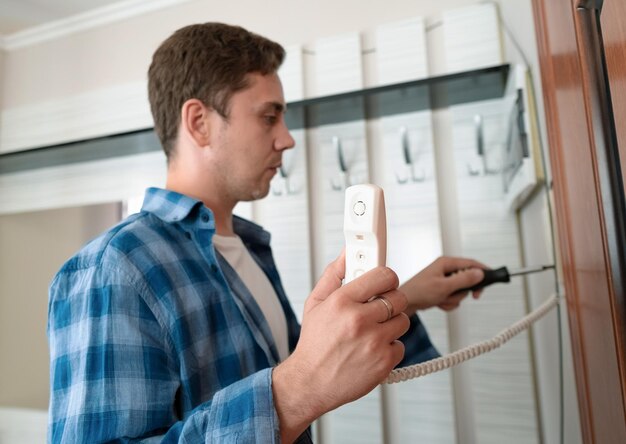Mastering Your KitchenAid Refrigerator: A Comprehensive Guide to Resetting It
KitchenAid refrigerators are known for their reliability and impressive features, but like any appliance, they might require a reset from time to time. Whether you’re dealing with a power surge, error codes, or just a less-than-perfect performance, resetting your KitchenAid refrigerator can be a simple and effective solution. In this article, we’ll walk you through the process of resetting your refrigerator, explore related controls and settings, and offer practical tips to keep your appliance running smoothly.
Why You Might Need to Reset Your KitchenAid Refrigerator
Several situations may necessitate a reset for your KitchenAid refrigerator. Here's why resetting might be the right move:
Power Surges or Outages: Sudden changes in power can disrupt the refrigerator’s operations. Resetting can help restore proper function.
Error Codes: If an error code appears on your refrigerator display, a reset might clear the code and solve the issue.
Performance Issues: When your fridge isn't cooling as it should, a reset might recalibrate the system.
Software Updates: Occasionally, updating the refrigerator’s software may require a reset to fully integrate the changes.
Steps to Reset Your KitchenAid Refrigerator
Resetting your KitchenAid refrigerator is typically a straightforward process. Here’s a step-by-step guide:
Unplug the Refrigerator:
- ⚠️ Safety First: Ensure your hands are dry to prevent any electrical hazards.
- Locate the power cord and unplug it from the electrical outlet.
Wait It Out:
- Patience is key. Allow the refrigerator to remain unplugged for about 5 to 10 minutes. This time allows the system to completely reset.
Plug It Back In:
- Reconnect the power cord to the outlet securely.
Adjust Settings:
- Once the refrigerator is powered back on, check your settings. You might need to reset the temperature, ice maker, or other features using the control panel.
Monitor Performance:
- Keep a close eye on your refrigerator over the next few hours to ensure everything is running smoothly. Adjust settings as necessary.
Diving Deeper into KitchenAid Refrigerator Settings
Beyond simply resetting your refrigerator, it's essential to understand the controls and settings that can enhance your appliance’s performance.
Control Panel Overview
KitchenAid refrigerators often come with a digital control panel, offering a range of customizable settings. Here's a quick overview:
Temperature Control: Most models allow you to adjust the temperature settings for both the fridge and freezer independently.
Ice Maker Settings: Activate or deactivate the ice maker, depending on your needs. Some models also offer options for setting ice cube size or type.
Water Filter Reset: After replacing the water filter, reset the filter status to keep track of maintenance schedules.
Energy Saver Mode: If your model has this feature, you can reduce energy use, which might adjust lighting or cooling slightly.
Common Error Codes and Their Meanings
Knowing how to interpret error codes can save you time and frustration. Here are a few common ones:
E1: Often related to temperature issues. Ensure that the doors are properly closed and seals aren’t damaged.
E2: This usually pertains to the freezer fan. Check for ice buildup and clear around the fan area.
E3: Often points to defrosting problems. A manual defrost might help, and inspect the defrost timer or heater.
If error codes persist after resetting, it might be time to consult your user manual or reach out to a professional technician.
Proactive Maintenance Tips for Your KitchenAid Refrigerator
While resets are handy, consistent maintenance can prevent many issues. Here’s how to proactively care for your refrigerator:
Regular Cleaning:
- Keep both the interior and exterior clean.
- Clean the coils annually to ensure efficient cooling.
Check Door Seals:
- Ensure seals are intact to maintain cooling efficiency.
- Replace any damaged or worn-out seals promptly.
Filter Replacements:
- Change water filters every six months or as recommended by your model.
Defrost Regularly:
- Manual defrost might be needed if ice buildup occurs, especially in models without automatic defrosting.
Optimal Loading:
- Avoid overloading the fridge to maintain airflow and temperature control.
Quick Reference Summary
Here’s a quick summary of the resetting process and maintenance tips to keep your KitchenAid refrigerator at its best:
📝 Steps to Reset:
- Unplug the fridge for 5-10 minutes 🕒.
- Plug back in securely 🔌.
- Adjust settings if necessary 🔧.
🔧 Key Maintenance Tips:
- Clean coils annually.
- Check and replace door seals.
- Replace water filters biannually.
- Avoid overloading for optimal airflow.
Concluding Insights
Understanding how to reset your KitchenAid refrigerator and maintain its functionality is a valuable skill that enhances your appliance's longevity and performance. Regular maintenance and familiarity with control settings not only prevent potential issues but also contribute to effective energy use and optimal food preservation.
Taking a proactive approach ensures that your KitchenAid refrigerator remains a reliable fixture in your kitchen. By incorporating these steps and tips into your appliance care routine, you're well-equipped to address any hiccups that come your way.
